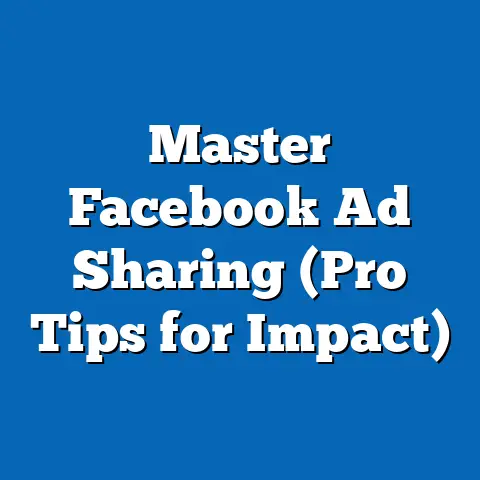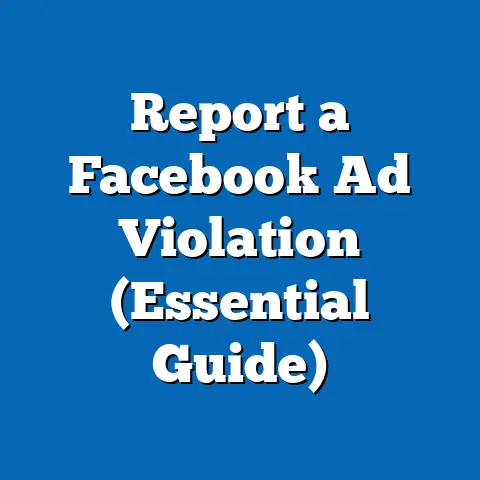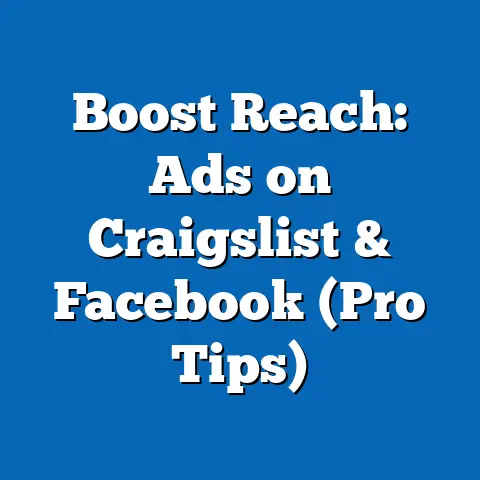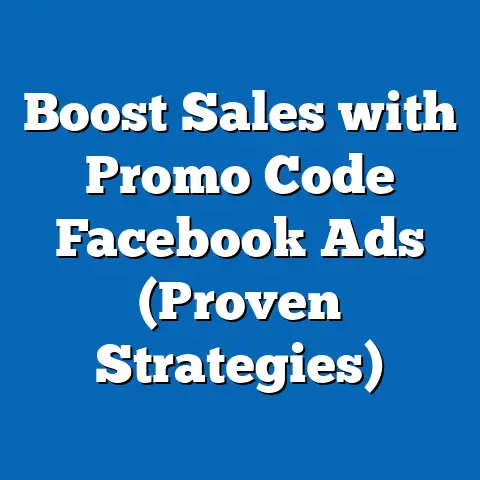Top Asian Cities for Effective Facebook Ads (Market Insights)
Facebook advertising has become a cornerstone of modern digital marketing, and nowhere is this more evident than in Asia. The region’s explosive growth in social media usage presents unparalleled opportunities for businesses to connect with vast, diverse audiences. But simply throwing money at Facebook ads isn’t enough. To truly succeed, you need to understand the unique dynamics of each local market, especially when it comes to budgeting.
I’ve seen firsthand how a well-crafted Facebook ad campaign, tailored to a specific Asian city, can deliver incredible results. I once worked with a small e-commerce business that was struggling to break into the Southeast Asian market. They were running generic Facebook ads with a global budget, and the results were underwhelming. After analyzing their data and focusing their budget on a hyper-targeted campaign in Bangkok, Thailand, their sales increased by 300% in just a few months! This experience solidified my belief that understanding local market nuances and advertising costs is crucial for success.
Key Takeaways You’ll Discover:
- Budgeting Strategies: Learn how to optimize your Facebook ad budget for different Asian markets, considering factors like CPM, CPC, and CPA.
- Top Cities to Target: Discover the leading Asian cities for Facebook advertising, based on population, internet penetration, and market potential.
- Cultural Nuances: Understand how local culture, language, and consumer behavior impact advertising effectiveness in each city.
- Emerging Trends: Stay ahead of the curve with insights into the latest trends in mobile usage, AI, AR, video content, and influencer marketing.
- Actionable Insights: Gain practical tips and real-world examples to help you create successful Facebook ad campaigns in Asia.
Understanding Facebook Advertising Budgets
Before diving into specific cities, let’s lay the groundwork by understanding Facebook’s advertising budgeting options. Choosing the right budget strategy is paramount to achieving your campaign objectives without breaking the bank. It’s not just about how much you spend, but how you spend it.
Budgeting Options on Facebook:
Facebook offers two primary budgeting options:
-
Daily Budget: This is the average amount you’re willing to spend each day. Facebook will aim to spend this amount, but it might fluctuate slightly depending on the day’s opportunities. I often recommend this for ongoing campaigns where you want consistent results.
- Example: Setting a daily budget of $20 means Facebook will try to spend around $20 each day to show your ads.
-
Lifetime Budget: This is the total amount you’re willing to spend over the entire duration of your campaign. Facebook will distribute this budget across the campaign’s lifespan, optimizing for the best results. This is great for campaigns with a specific end date, like a product launch or a seasonal promotion.
-
Example: Setting a lifetime budget of $500 for a campaign running for 10 days means Facebook will spend up to $500 over those 10 days, optimizing the daily spend to achieve the best results.
Daily Budget: This is the average amount you’re willing to spend each day. Facebook will aim to spend this amount, but it might fluctuate slightly depending on the day’s opportunities. I often recommend this for ongoing campaigns where you want consistent results.
- Example: Setting a daily budget of $20 means Facebook will try to spend around $20 each day to show your ads.
-
Lifetime Budget: This is the total amount you’re willing to spend over the entire duration of your campaign. Facebook will distribute this budget across the campaign’s lifespan, optimizing for the best results. This is great for campaigns with a specific end date, like a product launch or a seasonal promotion.
-
Example: Setting a lifetime budget of $500 for a campaign running for 10 days means Facebook will spend up to $500 over those 10 days, optimizing the daily spend to achieve the best results.
Lifetime Budget: This is the total amount you’re willing to spend over the entire duration of your campaign. Facebook will distribute this budget across the campaign’s lifespan, optimizing for the best results. This is great for campaigns with a specific end date, like a product launch or a seasonal promotion.
Example: Setting a lifetime budget of $500 for a campaign running for 10 days means Facebook will spend up to $500 over those 10 days, optimizing the daily spend to achieve the best results.
Bidding Strategies: How Facebook Spends Your Budget
Beyond the overall budget, you also need to choose a bidding strategy. This tells Facebook how aggressively you want to compete for ad placements. Here are a few common bidding strategies:
- Lowest Cost: Facebook will automatically bid to get you the most results for your budget. This is a good option if you’re new to Facebook ads or if you’re not sure how much to bid. However, it can sometimes lead to lower-quality results.
- Cost Cap: You set a target cost per result, and Facebook will try to stay within that limit. This gives you more control over your spending, but it might limit the number of results you get.
- Target Cost: Similar to Cost Cap, but Facebook has more flexibility to exceed your target cost if it believes it can get you better results.
- Bid Cap: You set the maximum amount you’re willing to bid in the auction. This gives you the most control over your spending, but it requires a good understanding of the market and your target audience.
- Value Optimization: (For e-commerce) Facebook will target users who are most likely to make a purchase and spend the most money. This requires you to have conversion tracking set up properly.
Importance of Setting an Appropriate Budget
Setting the right budget is a delicate balancing act. Too low, and your ads won’t reach enough people to make a significant impact. Too high, and you might waste money on irrelevant clicks or impressions. Several factors influence the ideal budget:
- Target Audience Size: The larger your target audience, the more you’ll need to spend to reach them effectively.
- Campaign Objectives: Are you trying to generate leads, drive website traffic, or increase sales? Different objectives require different budget levels.
- Competitive Landscape: If you’re advertising in a highly competitive market, you’ll need to bid more aggressively to stand out.
- Ad Relevance: The more relevant your ads are to your target audience, the lower your costs will be.
Average Costs in Asian Markets: CPM, CPC, and CPA
Understanding the average costs for Facebook ads in different Asian markets is crucial for effective budgeting. These costs vary significantly depending on the city, industry, and target audience. Here’s a breakdown of some key metrics:
-
CPM (Cost Per Mille/Thousand Impressions): This is the cost you pay for 1,000 impressions of your ad. CPM varies greatly across Asia. In some cities like Tokyo or Seoul, with higher advertising saturation, CPMs can be higher than in less developed markets like Dhaka or Ho Chi Minh City.
- Example: A CPM of $5 means you pay $5 for every 1,000 times your ad is shown.
-
CPC (Cost Per Click): This is the cost you pay each time someone clicks on your ad. CPC is influenced by factors like ad relevance, targeting, and competition. Cities with higher internet penetration and e-commerce activity tend to have higher CPCs.
-
Example: A CPC of $0.50 means you pay $0.50 every time someone clicks on your ad.
-
CPA (Cost Per Acquisition): This is the cost you pay for each desired action, such as a lead, a sale, or an app install. CPA is the most important metric for measuring ROI, as it directly reflects the cost of achieving your business goals.
-
Example: A CPA of $20 means you pay $20 for every lead or sale generated by your ad.
CPM (Cost Per Mille/Thousand Impressions): This is the cost you pay for 1,000 impressions of your ad. CPM varies greatly across Asia. In some cities like Tokyo or Seoul, with higher advertising saturation, CPMs can be higher than in less developed markets like Dhaka or Ho Chi Minh City.
- Example: A CPM of $5 means you pay $5 for every 1,000 times your ad is shown.
-
CPC (Cost Per Click): This is the cost you pay each time someone clicks on your ad. CPC is influenced by factors like ad relevance, targeting, and competition. Cities with higher internet penetration and e-commerce activity tend to have higher CPCs.
-
Example: A CPC of $0.50 means you pay $0.50 every time someone clicks on your ad.
-
CPA (Cost Per Acquisition): This is the cost you pay for each desired action, such as a lead, a sale, or an app install. CPA is the most important metric for measuring ROI, as it directly reflects the cost of achieving your business goals.
-
Example: A CPA of $20 means you pay $20 for every lead or sale generated by your ad.
CPC (Cost Per Click): This is the cost you pay each time someone clicks on your ad. CPC is influenced by factors like ad relevance, targeting, and competition. Cities with higher internet penetration and e-commerce activity tend to have higher CPCs.
Example: A CPC of $0.50 means you pay $0.50 every time someone clicks on your ad.
CPA (Cost Per Acquisition): This is the cost you pay for each desired action, such as a lead, a sale, or an app install. CPA is the most important metric for measuring ROI, as it directly reflects the cost of achieving your business goals.
Example: A CPA of $20 means you pay $20 for every lead or sale generated by your ad.
Important Note: These are just averages. Your actual costs will depend on your specific campaign and targeting.
Leveraging Facebook’s Ad Manager Tools for Budget Optimization
Facebook’s Ad Manager provides a wealth of tools to help you optimize your budget and maximize ROI. Some key features include:
- Budget Pacing: This feature helps you control how quickly your budget is spent. You can choose to spend your budget evenly throughout the day or to accelerate spending during peak hours.
- Automated Bidding: Facebook’s automated bidding strategies use machine learning to optimize your bids in real-time, helping you get the most results for your budget.
- Performance Reporting: Ad Manager provides detailed reports on your campaign performance, including CPM, CPC, CPA, and other key metrics. This data allows you to identify what’s working and what’s not, and to make adjustments accordingly.
- A/B Testing: Test different ad creatives, targeting options, and bidding strategies to see what performs best. This is essential for continuous optimization and improvement.
Takeaway: Understanding Facebook’s budgeting options, bidding strategies, and Ad Manager tools is crucial for maximizing your ROI in Asian markets. By setting the right budget and continuously optimizing your campaigns, you can achieve your business goals without overspending.
Next Steps:
- Familiarize yourself with Facebook’s Ad Manager interface and explore the different budgeting and bidding options.
- Research the average CPM, CPC, and CPA for your industry in the Asian cities you’re targeting.
- Set up conversion tracking to accurately measure your CPA and ROI.
- Start with a small test budget and gradually increase it as you optimize your campaigns.
Overview of Key Asian Markets
Asia is a continent of immense diversity, with each country and city possessing its own unique cultural, economic, and technological landscape. Understanding these nuances is essential for crafting effective Facebook ad campaigns. Let’s take a look at some key factors that make certain Asian cities prime targets for Facebook advertising.
Metrics for Identifying Top Asian Markets:
When evaluating potential Asian markets for Facebook advertising, I consider the following metrics:
- Population: A large population provides a larger pool of potential customers. However, it’s important to consider the demographics of the population to ensure it aligns with your target audience.
- Internet Penetration: The percentage of the population with access to the internet. Higher internet penetration means a larger potential audience for your online ads.
- Social Media Usage: The percentage of internet users who are active on social media platforms like Facebook. This indicates the potential reach of your Facebook ads.
- Mobile Penetration: Given the dominance of mobile internet usage in Asia, understanding mobile penetration rates is critical.
- E-commerce Activity: The volume of online sales in the city or country. High e-commerce activity indicates a receptive audience for online advertising.
- Economic Stability: A stable economy provides a more predictable and reliable market for businesses.
- Key Industries: Identifying the dominant industries in each city can help you tailor your advertising to specific target audiences.
- Language and Cultural Nuances: Understanding the local language and cultural customs is essential for creating ads that resonate with the target audience.
Brief Overview of Key Cities:
Here are a few key Asian cities that consistently rank high in terms of Facebook advertising potential:
- Tokyo, Japan: A highly developed market with high internet and social media penetration. Known for its tech-savvy population and strong e-commerce activity.
- Seoul, South Korea: Another highly developed market with a strong focus on technology and innovation. Home to a large and active social media user base.
- Mumbai, India: A rapidly growing market with a large and young population. Increasing internet and social media penetration make it a promising market for Facebook advertising.
- Jakarta, Indonesia: The capital of Indonesia, a country with a massive population and a rapidly growing digital economy. High mobile penetration and social media usage make it a prime target for Facebook advertising.
- Bangkok, Thailand: A popular tourist destination with a growing middle class and increasing internet and social media penetration.
- Ho Chi Minh City, Vietnam: A rapidly developing city with a young and tech-savvy population. Increasing internet and social media penetration make it an attractive market for Facebook advertising.
- Singapore: A small but affluent market with high internet and social media penetration. A hub for international business and finance.
Impact of Local Culture, Language, and Consumer Behavior:
Successfully advertising on Facebook in Asia requires a deep understanding of local culture, language, and consumer behavior. Here are a few key considerations:
- Language: Translate your ads into the local language to ensure they are understood by your target audience.
- Cultural Nuances: Be aware of cultural sensitivities and avoid any imagery or messaging that could be considered offensive.
- Consumer Preferences: Understand the local consumer preferences and tailor your products and services accordingly.
- Mobile-First Approach: Given the dominance of mobile internet usage in Asia, ensure your ads are optimized for mobile devices.
- Social Media Habits: Understand the local social media habits and tailor your advertising strategy accordingly.
- Influencer Marketing: Leverage the power of local influencers to reach your target audience.
Takeaway: Identifying the right Asian cities for Facebook advertising requires a thorough understanding of population, internet penetration, social media usage, economic stability, and local culture. By considering these factors, you can tailor your advertising strategy to maximize your ROI.
Next Steps:
- Research the demographics, internet penetration, and social media usage for the Asian cities you’re considering targeting.
- Identify the key industries and target audiences in each city.
- Learn about the local culture, language, and consumer behavior.
- Develop a mobile-first advertising strategy.
Top Cities for Facebook Ads
Now, let’s dive into a detailed analysis of some of the top Asian cities for Facebook advertising. I’ll break down the key metrics, target audiences, and successful strategies for each city.
1. Tokyo, Japan
- Population: Approximately 14 million (Greater Tokyo Area: over 37 million)
- Demographics: Aging population with a high percentage of affluent consumers.
- Internet Penetration: Over 90%
- Social Media Penetration: High, with Facebook being a popular platform, though LINE is more dominant in some demographics.
- Average Costs for Facebook Ads:
- CPM: $8 – $12 (USD)
- CPC: $0.80 – $1.50 (USD)
- CPA: Highly variable, depending on the industry and targeting.
- Key Industries: Technology, automotive, finance, fashion, and tourism.
- Target Audiences: Tech enthusiasts, luxury consumers, travelers, and professionals.
- CPM: $8 – $12 (USD)
- CPC: $0.80 – $1.50 (USD)
- CPA: Highly variable, depending on the industry and targeting.
Insights:
Tokyo is a highly competitive market with sophisticated consumers. To succeed here, you need to offer high-quality products and services with a strong brand reputation. Japanese consumers value trust and reliability.
Successful Strategies:
- Focus on Quality: Emphasize the quality and craftsmanship of your products.
- Build Trust: Use testimonials, reviews, and endorsements to build trust.
- Localize Your Messaging: Translate your ads into Japanese and adapt your messaging to resonate with Japanese culture.
- Leverage Visuals: Use high-quality images and videos to showcase your products.
Case Study:
A luxury skincare brand successfully launched in Tokyo by partnering with local beauty influencers and creating visually stunning Facebook ads that highlighted the brand’s commitment to quality and innovation.
2. Seoul, South Korea
- Population: Approximately 10 million (Greater Seoul Area: over 25 million)
- Demographics: Tech-savvy population with a strong focus on beauty and fashion.
- Internet Penetration: Over 95%
- Social Media Penetration: Extremely high, with Facebook being a popular platform, but KakaoTalk is the dominant messaging app.
- Average Costs for Facebook Ads:
- CPM: $7 – $11 (USD)
- CPC: $0.70 – $1.40 (USD)
- CPA: Highly variable, depending on the industry and targeting.
- Key Industries: Technology, entertainment, beauty, fashion, and e-commerce.
- Target Audiences: Young adults, fashion enthusiasts, beauty aficionados, and tech enthusiasts.
- CPM: $7 – $11 (USD)
- CPC: $0.70 – $1.40 (USD)
- CPA: Highly variable, depending on the industry and targeting.
Insights:
Seoul is a trendsetting market with a strong focus on innovation and style. To succeed here, you need to stay ahead of the curve and offer cutting-edge products and services.
Successful Strategies:
- Embrace Trends: Stay up-to-date on the latest trends in beauty, fashion, and technology.
- Leverage K-Pop: Partner with K-Pop stars or use K-Pop-inspired visuals in your ads.
- Focus on Visuals: Use visually stunning images and videos to capture attention.
- Offer Promotions: Korean consumers are highly price-sensitive, so offer attractive promotions and discounts.
Case Study:
A fashion e-commerce brand successfully launched in Seoul by partnering with popular K-Pop idols and creating engaging Facebook ads that showcased the latest fashion trends.
3. Mumbai, India
- Population: Approximately 12.5 million (Greater Mumbai: over 20 million)
- Demographics: Young and rapidly growing population with increasing disposable income.
- Internet Penetration: Over 60% (and growing rapidly)
- Social Media Penetration: High, with Facebook being a dominant platform.
- Average Costs for Facebook Ads:
- CPM: $1 – $3 (USD)
- CPC: $0.10 – $0.30 (USD)
- CPA: Relatively low, but increasing as competition grows.
- Key Industries: Bollywood, finance, technology, and manufacturing.
- Target Audiences: Young adults, professionals, and families.
- CPM: $1 – $3 (USD)
- CPC: $0.10 – $0.30 (USD)
- CPA: Relatively low, but increasing as competition grows.
Insights:
Mumbai is a price-sensitive market with a strong focus on value. To succeed here, you need to offer affordable products and services that meet the needs of the local population.
Successful Strategies:
- Focus on Value: Emphasize the value and affordability of your products.
- Localize Your Messaging: Translate your ads into Hindi or Marathi and adapt your messaging to resonate with Indian culture.
- Use Storytelling: Indian consumers love stories, so use storytelling in your ads to connect with them on an emotional level.
- Offer Mobile-Friendly Solutions: With high mobile penetration, ensure your ads and website are optimized for mobile devices.
Case Study:
A mobile e-commerce platform successfully launched in Mumbai by offering affordable products and services tailored to the needs of the local population and creating engaging Facebook ads that told stories about how their products improved people’s lives.
4. Jakarta, Indonesia
- Population: Approximately 10.5 million (Greater Jakarta: over 30 million)
- Demographics: Young and rapidly growing population with high mobile penetration.
- Internet Penetration: Over 70%
- Social Media Penetration: Extremely high, with Facebook being a dominant platform.
- Average Costs for Facebook Ads:
- CPM: $0.50 – $2 (USD)
- CPC: $0.05 – $0.20 (USD)
- CPA: Relatively low, making it an attractive market for ROI.
- Key Industries: E-commerce, tourism, food, and fashion.
- Target Audiences: Young adults, mobile users, and value-conscious consumers.
- CPM: $0.50 – $2 (USD)
- CPC: $0.05 – $0.20 (USD)
- CPA: Relatively low, making it an attractive market for ROI.
Insights:
Jakarta is a mobile-first market with a strong focus on social media. To succeed here, you need to offer mobile-friendly solutions and leverage the power of social media marketing.
Successful Strategies:
- Mobile-First Approach: Ensure your ads and website are optimized for mobile devices.
- Social Media Marketing: Leverage the power of Facebook, Instagram, and other social media platforms to reach your target audience.
- Influencer Marketing: Partner with local influencers to promote your products and services.
- Offer Convenience: Indonesian consumers value convenience, so offer easy-to-use mobile apps and fast delivery options.
Case Study:
A ride-hailing app successfully launched in Jakarta by offering convenient and affordable transportation solutions and creating engaging Facebook ads that highlighted the app’s ease of use and reliability.
5. Bangkok, Thailand
- Population: Approximately 8.3 million (Greater Bangkok: over 14 million)
- Demographics: Growing middle class with a strong focus on tourism and entertainment.
- Internet Penetration: Over 75%
- Social Media Penetration: High, with Facebook being a dominant platform.
- Average Costs for Facebook Ads:
- CPM: $1 – $3 (USD)
- CPC: $0.10 – $0.35 (USD)
- CPA: Relatively low, but increasing as the market becomes more competitive.
- Key Industries: Tourism, hospitality, food, and retail.
- Target Audiences: Tourists, young adults, and middle-class consumers.
- CPM: $1 – $3 (USD)
- CPC: $0.10 – $0.35 (USD)
- CPA: Relatively low, but increasing as the market becomes more competitive.
Insights:
Bangkok is a vibrant and dynamic market with a strong focus on tourism and entertainment. To succeed here, you need to offer unique and engaging experiences that cater to the needs of tourists and locals alike.
Successful Strategies:
- Target Tourists: Create ads that target tourists visiting Bangkok, highlighting local attractions and experiences.
- Leverage Visuals: Use visually stunning images and videos to showcase the beauty of Bangkok and the excitement of local experiences.
- Offer Promotions: Thai consumers are price-sensitive, so offer attractive promotions and discounts.
- Partner with Local Businesses: Collaborate with local businesses to offer joint promotions and reach a wider audience.
Case Study:
A tour operator successfully launched in Bangkok by creating engaging Facebook ads that showcased the city’s iconic landmarks and offering exclusive discounts to tourists who booked tours through their website.
6. Ho Chi Minh City, Vietnam
- Population: Approximately 9 million (Greater Ho Chi Minh City: over 13 million)
- Demographics: Young and rapidly growing population with increasing internet access.
- Internet Penetration: Over 70%
- Social Media Penetration: High, with Facebook being a dominant platform.
- Average Costs for Facebook Ads:
- CPM: $0.30 – $1.50 (USD)
- CPC: $0.03 – $0.15 (USD)
- CPA: Very low, making it an attractive market for ROI.
- Key Industries: Manufacturing, agriculture, tourism, and technology.
- Target Audiences: Young adults, students, and professionals.
- CPM: $0.30 – $1.50 (USD)
- CPC: $0.03 – $0.15 (USD)
- CPA: Very low, making it an attractive market for ROI.
Insights:
Ho Chi Minh City is a rapidly developing market with a young and tech-savvy population. To succeed here, you need to offer innovative products and services that cater to the needs of the local population.
Successful Strategies:
- Focus on Innovation: Offer innovative products and services that meet the needs of the local population.
- Mobile-First Approach: Ensure your ads and website are optimized for mobile devices.
- Social Media Marketing: Leverage the power of Facebook, Instagram, and other social media platforms to reach your target audience.
- Offer Convenience: Vietnamese consumers value convenience, so offer easy-to-use mobile apps and fast delivery options.
Case Study:
An e-learning platform successfully launched in Ho Chi Minh City by offering affordable online courses tailored to the needs of Vietnamese students and creating engaging Facebook ads that highlighted the platform’s ease of use and accessibility.
Takeaway: Each of these cities presents unique opportunities and challenges for Facebook advertisers. By understanding the local demographics, internet penetration, social media usage, key industries, and target audiences, you can tailor your advertising strategy to maximize your ROI.
Next Steps:
- Choose the Asian cities that best align with your business goals and target audience.
- Research the local culture, language, and consumer behavior in each city.
- Develop a tailored advertising strategy for each city, considering the local dynamics and competitive landscape.
- Continuously monitor and optimize your campaigns based on performance data.
Market Trends Influencing Facebook Advertising in Asia
The landscape of Facebook advertising in Asia is constantly evolving, driven by rapid advancements in technology and shifts in consumer behavior. Staying ahead of these trends is essential for maintaining a competitive edge.
Mobile Usage Dominance:
Asia is a mobile-first continent, with the vast majority of internet users accessing the web through their smartphones. This has profound implications for Facebook advertising:
- Mobile-Optimized Ads: Ensure your ads are optimized for mobile devices, with clear visuals, concise messaging, and fast loading times.
- Mobile-Friendly Landing Pages: Direct users to mobile-friendly landing pages that are easy to navigate and convert on smartphones.
- Mobile-Specific Targeting: Leverage Facebook’s mobile targeting options to reach users based on their device type, operating system, and mobile network.
Emerging Technologies: AI and AR
Artificial intelligence (AI) and augmented reality (AR) are transforming the way businesses interact with consumers on Facebook.
- AI-Powered Ad Optimization: Facebook’s AI algorithms are constantly learning and optimizing ad campaigns in real-time, helping you get the most results for your budget.
- AR Ads: Use AR ads to allow users to virtually try on products or experience your brand in a unique and engaging way.
Changing Privacy Regulations:
Data privacy is becoming an increasingly important issue in Asia, with governments enacting stricter regulations to protect consumer data.
- Transparency and Consent: Be transparent about how you collect and use user data and obtain explicit consent from users before collecting their data.
- Data Minimization: Collect only the data you need for your advertising campaigns.
- Compliance with Local Laws: Ensure your advertising practices comply with all applicable data privacy laws and regulations.
Video Content is King:
Video content continues to dominate social media, and Facebook is no exception.
- Short-Form Videos: Create short, engaging videos that capture attention quickly.
- Live Videos: Use live videos to interact with your audience in real-time and build relationships.
- Vertical Videos: Optimize your videos for mobile viewing by using vertical video format.
The Rise of Influencer Marketing:
Influencer marketing is a powerful way to reach your target audience on Facebook.
- Identify Relevant Influencers: Research and identify influencers who have a strong following among your target audience.
- Authentic Partnerships: Partner with influencers who are authentic and genuine and who align with your brand values.
- Creative Collaboration: Collaborate with influencers to create engaging content that resonates with their audience.
Localized Content is Essential:
Tailoring your content to the local language and culture is essential for success.
- Translate Your Ads: Translate your ads into the local language to ensure they are understood by your target audience.
- Adapt Your Messaging: Adapt your messaging to resonate with local cultural values and customs.
- Use Local Imagery: Use images and videos that reflect the local culture and environment.
Takeaway: The Facebook advertising landscape in Asia is constantly evolving. By staying ahead of the curve and adapting to the latest trends, you can maximize your ROI and achieve your business goals.
Next Steps:
- Stay informed about the latest trends in mobile usage, AI, AR, data privacy, video content, and influencer marketing.
- Experiment with new advertising formats and technologies.
- Continuously monitor and optimize your campaigns based on performance data.
- Adapt your advertising strategy to comply with evolving data privacy regulations.
Conclusion
Navigating the world of Facebook advertising in Asia can seem daunting, but with the right knowledge and strategies, you can unlock tremendous opportunities for growth and success. Throughout this article, I’ve emphasized the importance of understanding local market dynamics, tailoring your advertising approach to specific cities, and staying informed about the latest trends.
Remember, a one-size-fits-all approach simply won’t work in Asia. Each city has its own unique cultural, economic, and technological landscape. By taking the time to research and understand these nuances, you can craft Facebook ad campaigns that resonate with your target audience and deliver exceptional results.
I’ve seen firsthand how strategic budgeting and tailored advertising can transform a struggling campaign into a resounding success. By leveraging the insights and strategies outlined in this article, you can achieve significant ROI through strategic budgeting and tailored advertising approaches in these diverse cities.
The potential for businesses to achieve significant ROI through strategic budgeting and tailored advertising approaches in these diverse cities is immense. So, embrace the challenge, stay curious, and never stop learning. The Asian market is waiting to be conquered, and with the right Facebook advertising strategy, you can be a part of that success story.
Key Reminders:
- Localize, Localize, Localize: Tailor your messaging, visuals, and language to resonate with the specific culture of each city.
- Mobile-First Mindset: Always prioritize mobile optimization, as mobile devices are the primary way people access the internet in Asia.
- Data Privacy Matters: Be transparent about your data collection practices and comply with local regulations.
- Stay Agile: The digital landscape is constantly changing, so be prepared to adapt your strategies as needed.
- Test and Iterate: Continuously experiment with different ad formats, targeting options, and bidding strategies to find what works best.
Final Encouragement:
Don’t be afraid to experiment and try new things. The most successful Facebook advertisers are those who are willing to take risks and push the boundaries of what’s possible. With the right mindset and a commitment to continuous learning, you can achieve your advertising goals and unlock the full potential of the Asian market.
References and Further Reading
To continue your journey of mastering Facebook advertising in Asia, I recommend exploring these credible sources and reports for additional insights and data:
- Facebook Business Help Center: https://www.facebook.com/business/help – This is your go-to resource for official information about Facebook advertising features, policies, and best practices.
- Think with Google: https://www.thinkwithgoogle.com/ – While not exclusively focused on Facebook, Think with Google offers valuable insights into consumer behavior and digital trends in Asia.
- eMarketer: https://www.emarketer.com/ – A leading market research firm that provides data and analysis on digital marketing trends, including social media advertising in Asia.
- Statista: https://www.statista.com/ – A comprehensive database of statistics and market data, including information on internet penetration, social media usage, and e-commerce activity in Asian countries.
- Hootsuite Blog: https://blog.hootsuite.com/ – A valuable resource for social media marketing tips and strategies, including articles on Facebook advertising.
- Social Media Examiner: https://www.socialmediaexaminer.com/ – A leading online magazine that provides expert advice on social media marketing, including Facebook advertising.
- AdEspresso Blog: https://adespresso.com/blog/ – A blog dedicated to Facebook advertising, offering tips, strategies, and case studies.
By staying informed about the latest trends and best practices, you can continuously improve your Facebook advertising skills and achieve your business goals in the dynamic Asian market. Good luck!






